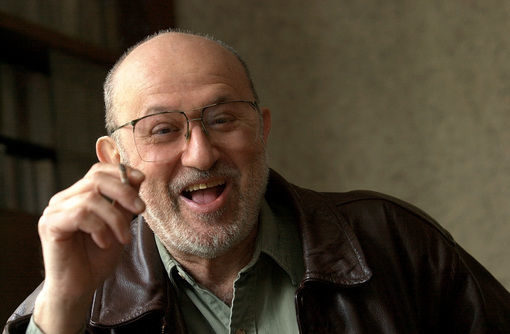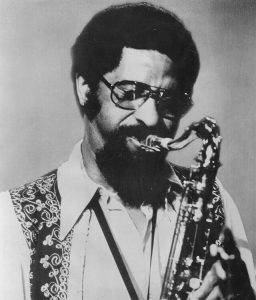Artist-Educators, Blog, Jazz on the Tube Interview, People, Podcasts
Interview
Download the mp3 here
Singer, writer, and educator Tom Cunniffe was part of the legendary and unfortunately now-defunct Jazz.com.
He’s captured the spirit of that site and put his own unique twist on it with a unique approach to reviewing the music and shining a light on some of the great music of the past that deserves a second look – or maybe even a first look for some of us. Highly recommended.
Details: JazzHistoryOnline.com
– Ken McCarthy
Jazz on the Tube
P.S. Our unique programming is made possible by help from people like you. Learn how you can contribute to our efforts here: Support Jazz on the Tube
Thanks
Afro-Cuban culture, Blog, Cuba, Video and audio
Like New Orleans and Brazil and other places with Catholic cultural roots, Cuba has a vibrant Carnival culture.
This black and white film shows what Carnival looked like in February of 1962. The director: Alberto Roldán.
This was shot in is in Havana, but Carnival is celebrated all over Cuba and is especially dynamic in Santiago de Cuba.
Important: Don’t go looking for Carnival in Cuba on Mardi Gras. The dates were moved to July 18–27 to honor the Cuban Revolution.
Here’s what Carnival is like these days in Santiago de Cuba.
– Ken McCarthy
Jazz on the Tube
P.S. Our unique programming is made possible by help from people like you. Learn how you can contribute to our efforts here: Support Jazz on the Tube
Thanks.
Go to Cuba with Jazz on the Tube as your guide:
Click here for details
Afro-Cuban culture, Blog, Cuba, Video
La Tumba Francesca is an art form unique to eastern Cuba.
Tumba is “drum” and “Francesa” is French, so it means literally “French drums.”
Why “French?”
Because the art was created by the French-speaking Haitians who came to eastern Cuba during and after the Haitian Revolution
This documentary by Jimenez Leal y Nestor Almedros is from 1961. The visual quality is not great, but what it captures is, so we went with it. You can find additional videos of this music on YouTube.
Tumba Francesca was in its heyday in the late 19th century when a profusion of sociedades de tumba francesa (tumba francesa societies) flourished. Three remain in operation today.
Historical background
The Haitian Revolution was one of the most important events in Cuban history, music history, and world history for that matter.
Haiti (then called Saint-Domingue) was a monstrously corrupt place with perhaps the most brutal slave regime the world has ever seen – but it was rich and it invested no small amount of its wealth in music.
In fact, the French musical culture in Saint-Domingue far surpassed anything else in the hemisphere at the time including New York and Boston.
As a result of the Revolution, Haiti became the first country in the Western Hemisphere to outlaw slavery.
During and after the fighting, thousands of Haitians left the island for the United States (including New Orleans), and eastern Cuba where they settled in and around Santiago de Cuba and Guantánamo.
This cultural influx had a huge impact on Cuban culture and American culture too
During a war between France and Spain a large number of French in Cuba were expelled. Many went to New Orleans where they literally doubled the population overnight and transformed what was then a backwater into one of the most important centers of musical innovation of the 19th and 20th centuries.
You can’t fully understand our music – jazz, blues, rock and roll, funk etc. – without appreciating its Haitian roots.
Here’s some of the history of the French Haitians in Cuba:
– Ken McCarthy
Jazz on the Tube
P.S. Our unique programming is made possible by help from people like you. Learn how you can contribute to our efforts here: Support Jazz on the Tube
Thanks.
Artist-Educators, Blog, Jazz on the Tube Interview, People, Podcasts, Video

Interview
Download the mp3 here
Milcho’s Official website: Bio and more info
http://milcholeviev.net/new/en/
Pianist and composer Milcho Leviev was born and raised in Bulgaria in 1937 which means he had the experience of World War II, the Soviet invasion, and a long dictatorship as a child and young man.
Milcho is part of a wave of supremely accomplished musicians from Eastern Europe who’ve made huge creative contributions to jazz over the decades.
Their dedication to the art is epic and perhaps not fully appreciated.
During the Communist times, jazz was, for all practical purposes, a banned music in the Eastern Bloc. Schools did not teach it, public performances were frowned on, jazz records were seized at Customs and pursuing jazz was a potential career-killer for a professional musician.
Still they persisted.
Milcho relates how a small group of dedicated musicians and fans in his country tuned into Willis Conover’s 1 AM Voice of America jazz broadcast with their primitive tape recorders turned on.
The hope was that one of the group would get a relatively clear signal (the program was jammed by authorities) and could share the tape with others. They then laboriously worked together to transcribe the recordings so they could study them.
Why did they love jazz so much? Because it exemplified freedom.
A sampling of where that love of freedom has brought Milcho. Enjoy!
Milcho returns to Bulgaria
With Art Pepper
With Don Ellis
With Bill Cobham
With Dave Holland
Tribute to Voice of America’s Willis Conover
Bulgarian cartoon from the 60s (Jazz in banned in Heaven)
Where Milcho lives now: Thessaloniki, Greece
– Ken McCarthy
Jazz on the Tube
P.S. Our unique programming is made possible by help from people like you. Learn how you can contribute to our efforts here: Support Jazz on the Tube
Thanks
Blog, Cuba, The Cuba-US connection, Video, Video and audio
Pianist Cuban-Canadian Beatriz Boizan performs selections from “Danzas Cubanas” (Cuban Dances) by Ignacio Cervantes (1847-1905)
Born in Cuba and raised in the eastern city of Baracoa, Boizan emigrated to Canada at 20.
If Cervantes’ music sounds reminiscent of Scott Joplin (1867/68-1917), the influence flowed in the opposite direction. Joplin was born 21 years after Cervantes into a world where Cuban pianists and composers were king.
The sound of the piano in the late 19th century
Among other sources, Cervantes received training from New Orleans born composer and pianist Louis Moreau Gottschalk (1829-1869) when Gottschalk visited and lived in Cuba.
It’s almost certain Joplin would have known Gottschalk’s work through sheet music if not direct exposure. Gottschalk’s music was popular in the US and around the world and he traveled and performed widely in the US.
Cervantes himself spent extended time away Cuba in 1875 touring the US and Mexico to raise money for rebels against the Spanish.
Here’s a Joplin piece “Solace” (also known as “Mexican Serenade”) with a bit of the Habanera rhythm.
– Ken McCarthy
Jazz on the Tube
P.S. Our unique programming is made possible by help from people like you. Learn how you can contribute to our efforts here: Support Jazz on the Tube
Thanks.
Artist-Educators, Blog, Chroniclers, Jazz on the Tube Interview, People, Podcasts

Interview
Download the mp3 here
Musician, educator and historian Bruce Conforth introduces us to the real Robert Johnson.
Far from the one-dimensional “native genius” he is often portrayed as, Robert Johnson was a well read, well traveled, versatile artist whose genius was no accident.
Dead at the age of 26, in his short life Johnson’s art left an indelible mark on American and world music.
Conforth, a guitarist and harmonica player, has been studying Johnson’s life and work for 40 years.
– Ken McCarthy
Jazz on the Tube
P.S. Our unique programming is made possible by help from people like you. Learn how you can contribute to our efforts here: Support Jazz on the Tube
Thanks.





